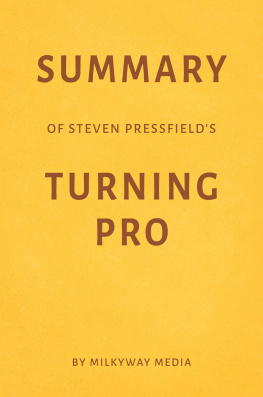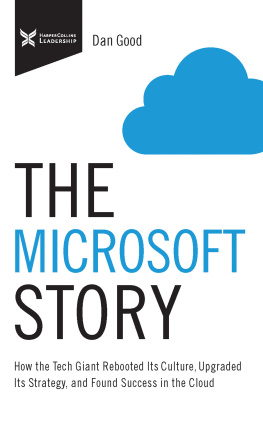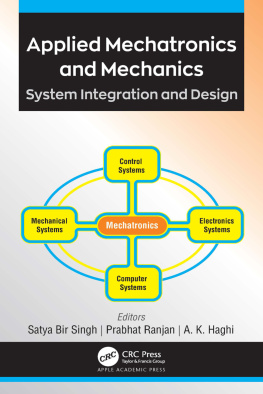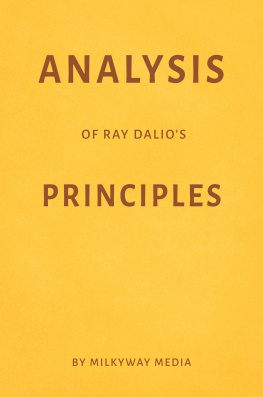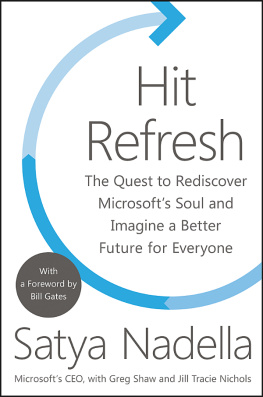Analysis
of
Satya Nadellas
Hit Refresh
The Quest to Rediscover Microsofts Soul and Imagine a Better Future for Everyone
by
Milkyway Media
Table of Contents
Overview
Hit Refresh: The Quest to Rediscover Microsofts Soul and Imagine a Better Future for Everyone (2017) is Satya Nadellas memoir of his work as the chief executive officer of Microsoft. Nadella describes his efforts to reform the companys culture and push its priorities toward the next generation of technology.
When Nadella first joined Microsoft as an operating system specialist in 1992, the company culture was defined by political competition and misaligned priorities. As soon as he was hired as the companys CEO in 2014, he gave himself the task of reforming the culture so that everyone would work together toward innovation.
Nadella was inspired to develop new technologies at Microsoft by his special-needs son, whose life with cerebral palsy was enriched with adaptive technology. Nadella began his journey to Microsoft as a child in India, where his parents encouraged him to pursue computer science. Although his true passion was playing cricket, he attended the Manipal Institute of Technology to earn a degree in electrical engineering. He then obtained a visa to earn his masters degree in the computer science program at the University of Wisconsin. After obtaining his masters, he briefly worked for a software vendor before joining Sun Microsystems. From there, he joined Microsoft.
Leaders at Microsoft, including founder Bill Gates and his successor CEO Steve Ballmer, pushed Nadella into more significant roles including leadership of the search engine team. To lead the team, Nadella needed to become familiar quickly with cloud services and consumer-facing products. Ballmer later asked Nadella to lead the server and tools business team, where he pushed for a greater focus on the cloud.
In 2014, Ballmer stepped down as CEO and the search team offered Nadella the position. The companys value had stagnated and the employees were unmotivated. Nadella, who saw a need to refresh the company, decided Microsoft should shift direction toward mobile technology and the cloud. Nadella recognized that Microsoft was already behind its competitors on those fronts. He wanted to realign the companys energies with its original purpose of empowering people through technology. Ensuring that all employees were motivated by that purpose, and by their individual passions, required a culture shift. Nadella wanted to refresh the culture and its values, not remake it.
Nadella became CEO at the same time that Microsoft finalized its purchase of mobile phone producer Nokia. That purchase eventually forced Nadella to lay off employees as the purchase turned out to be a loss. It was a difficult chapter in his career.
At Microsoft, Nadella learned that company culture comes from the CEOs vision and effort. Leadership at Microsoft, including the CEOs role, is defined by its ability to energize, enable, and bring clarity to the leaders teams. The CEO is also responsible for making the company more representative and preventing teams from isolating themselves.
One method Nadella implemented as CEO was to make mutually beneficial partnerships with Microsofts competitors. Some of these relationships presented new challenges for the company because the partners were also competitors, but their disagreements were ultimately settled in mutually beneficial ways.
Microsoft focused on three innovative technologies. One, the HoloLens, is the companys entrance into the world of mixed reality. Microsoft developed the second one, Cortana, as an artificially intelligent assistant, and the company incorporates artificial intelligence into other tools such as translators. The third technology is quantum computing, which would vastly improve the speed and capacity of a wide variety of devices.
As Microsoft pursued long-term goals surrounding these technologies, it faced a series of events that called attention to its positions on privacy and trust. Controversially, Microsoft helped release a movie despite the opposition of state-sponsored hackers. It supported Apple in its fight against politicians who asked device manufacturers to compromise device security. These cases emphasized the importance of regulatory frameworks in the tech industry.
In the long term, Microsoft continues to focus on developing cutting-edge technology while staying true to its ethical obligation to empower people. Some people assume that new technologies will eliminate jobs, but technology has the potential to increase an individuals skill level and education, and thus promote growth without disenfranchising workers.
Key Insights
- When Satya Nadella became CEO, Microsofts internal culture was negatively impacting its sales and productivity. He decided that a refresh would help realign the company with its original values.
- The key value Nadella promoted to employees was that Microsofts products should empower people to accomplish their individual goals.
- Leading the companys culture is a CEOs responsibility, but he or she cannot enforce or mandate a culture shift. Instead, the CEO depends on employees adopting the CEOs perspective for the shift to take effect.
- A leader must make values and goals clear for employees, energize them so that they are all enthusiastically working in the same direction, and provide anything the team needs to succeed.
- Microsoft was lagging behind its competitors in new technologies before the culture shift.
- A company must spend an adequate amount of time and resources on employees, products, partners, and customers in order to succeed.
- Partners can be competitors as long as both parties benefit from the partnership.
- Sometimes, it is vitally important for a company to take a risky stand on one side of a controversy.
- Because Microsoft values empowering people, its engineers develop technology that does not replace worker or reduce their options.
- New technology leads to overall economic growth when it is used to increase human capital.
- Even after becoming CEO, Nadella continued to be inspired by Microsofts leaders to pursue his goals, showing the importance of leadership to inspire and empower.
- Empathy drives the development of solutions at Microsoft. Nadella was inspired as a leader by seeing his son, a person with a congenital disability, derive empowerment from tools designed to help him.
Important People
Satya Nadella is the CEO and former executive vice president of Microsoft.
Greg Shaw is the senior director of the office of the CEO for Microsoft.
Jill Tracie Nichols is Satya Nadellas chief of staff and general manager at Microsoft.
Bill Gates is a philanthropist who founded Microsoft and served as its chairman until 2014.
Steve Ballmer was Microsofts first business manager and served as its CEO from 2000 until 2014.
Authors Style
Hit Refresh is both a memoir and a management guide. Rather than focus on Nadellas personal experiences, it describes the history of Microsoft during his tenure and examines changes within the internal culture.
The events described in the memoir sections of Hit Refresh offer little detail. There is sparse dialogue or descriptions of setting. Rather than serving as characters in the narrative, people are characterized by their previous or present employment, their projects, or their positions at Microsoft. The lists of the people who were present for events or meetings can often be quite long, but only a couple of those people are featured for their involvement in a given scene. Nadellas family and personal life feature prominently alongside significant events in Microsofts corporate history.
Next page


